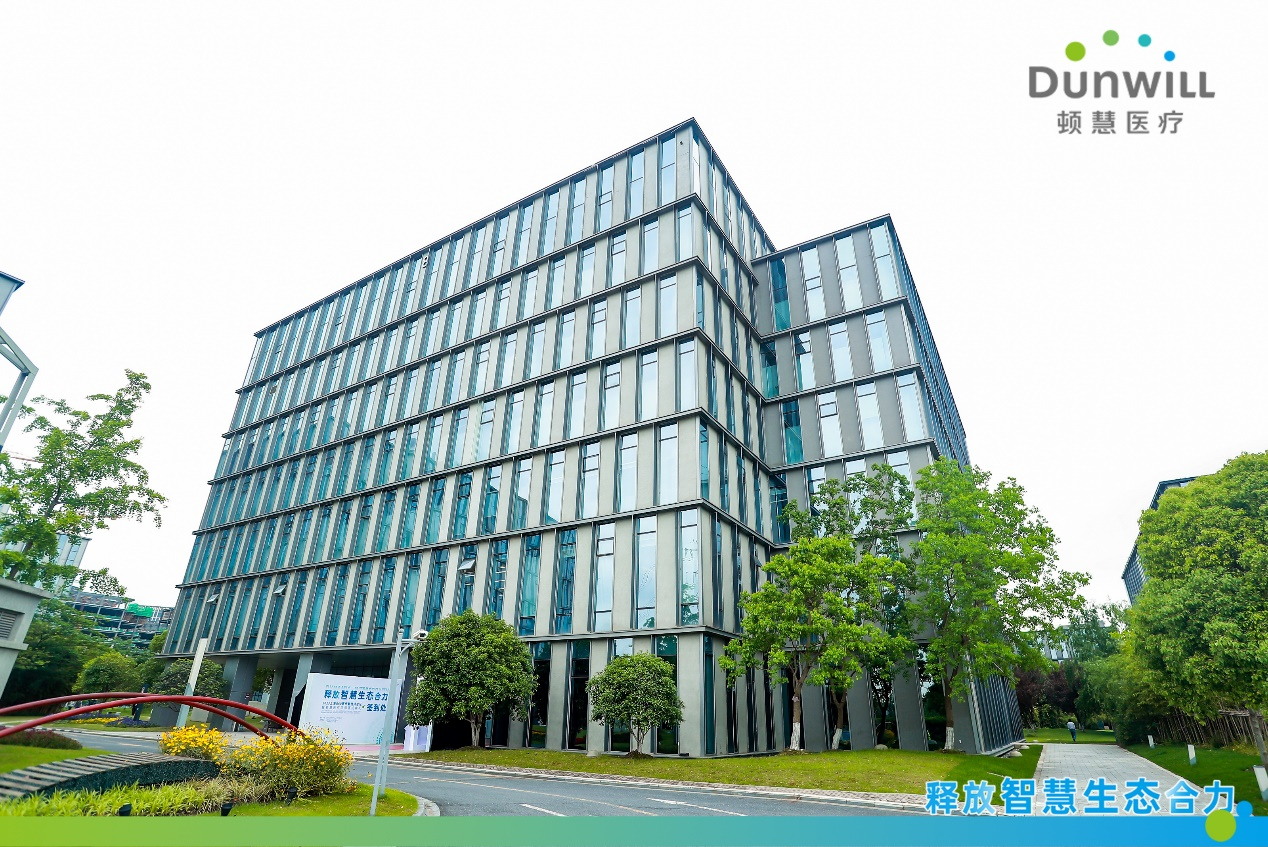Energy Storage for a Long Journey, Foresight of the Future | Dunwill Medical Makes a Wonderful Appearance at the 2023 Fudan International Summit-Forum on Precision Medicine
The 2023 Fudan International Summit-Forum on Precision Medicine and Fudan Zhongshan Hospital Molecular Pathology Center Annual Meeting were held in Shanghai from April 28th to 29th, 2023. The conference attracted numerous experts and scholars to participate, and the reports from each forum were rich in content. Through comprehensive, multi perspective, and interdisciplinary integration, multidisciplinary experts were empowered to collide their thinking, inspire ideas, and lead trends in academic research and clinical diagnosis and treatment.

On the afternoon of April 28th, the Dunwill Medical Satellite Meeting was packed. Professor Sun Yunfan from Zhongshan Hospital affiliated to Fudan University shared a keynote report titled "Multiomics Technology Platform Analysis of the Complex Spatiotemporal Evolution Mechanism of Liver Cancer Metastasis", bringing a wonderful academic feast to everyone.

Recurrence and Metastasis are Bottlenecks, Mechanism Understanding Needs to Be Broken Through
China is a major country in liver cancer. As early as 2014, the World Health Organization released the World Cancer Report, which showed that in 2012, China accounted for more than half of the world's new cases and deaths of liver cancer. The overall five-year survival rate of liver cancer is only 14%, with nearly half of patients diagnosed with distant metastasis. The postoperative 5-year metastasis/recurrence rate is as high as 60% -70%. Liver cancer metastasis and recurrence are bottlenecks that constrain the overall survival rate of liver cancer. In response to this phenomenon, Professor Sun Yunfan's team conducted in-depth exploration and analysis of the metastasis mechanism of liver cancer, pioneering the elucidation of the macro evolution and micro interaction mechanisms in the process of liver cancer disease.
The preliminary analysis of the study established a tumor biological sample library containing 182 liver cancer patients. Professor Sun Yunfan, together with Dunwill Medical and Shanghai University of Science and Technology, used multi-omics methods such as WES, RNA seq, immunohistochemistry database, and spatial transcriptome to conduct genetic tracing of liver cancer metastasis. The preliminary results of the study are gratifying.
Using Multiomics Systems to Deconstruct Tumor Cell and Reveals Microenvironment Maps
The study on the heterogeneity of new antigens in liver cancer metastases and their association with prognosis is still ongoing, and it is expected that the study will be completed this year. Professor Sun Yunfan's team is currently conducting research on the complex spatiotemporal evolution mechanism of liver cancer metastasis, aiming to deeply explore the microenvironment and macroscopic evolution of tumors, and analyze the differences in metastasis and recurrence among different liver cancer patients as well as the reasons for metastasis. Currently, the research conclusions have begun to take shape, and it is believed that subsequent exploration and analysis will provide an important theoretical basis for the clinical diagnosis and treatment of liver cancer patients.
Professor Sun Yunfan believes that the results of this study on the complex spatiotemporal evolution mechanism of liver cancer metastasis are impressive. Currently, this field is a difficult exploration point, and more and more research will emerge like mushrooms after rain in the future. At present, Professor Sun Yunfan's team has initiated research on the analysis of biomarkers for recurrence and metastasis in clinical samples. Looking forward to the publication of the results of this study, which can provide more treatment options for liver cancer patients.
The Follow-up Exploration Results are Stunning, and Clinical Research is Expected
Professor Sun Yunfan's team, together with Dunwill Medical and BGI Research Institute, constructed a spatiotemporal multi omics dataset for primary metastasis pairing in liver cancer patients and small animal models, and established a spatiotemporal multi omics dataset and a digital pathology dataset at the single-cell scale. Professor Sun Yunfan pointed out that the process of liver cancer metastasis requires detailed and systematic elucidation from different levels such as nucleic acid to cells, tissues, and organs, combined with time and space axes. This study will further elucidate the molecular mechanism of primary liver cancer metastasis in the Chinese population, and reveal biomarkers for innovative target therapies in the Chinese population. This will further promote the evolution of liver cancer treatment patterns and may further improve the treatment effectiveness of future liver cancer.
However, the challenge of more efficient screening of populations with early metastasis of liver cancer and more precise determination of treatment interventions still requires more in-depth clinical exploration. Professor Sun Yunfan pointed out that whether it is basic research or clinical treatment, with a series of leading Chinese original achievements being announced, it has demonstrated a huge transformation of Chinese original research from following to leading. While maintaining confidence, we also need to recognize that the implementation of new progress requires time to settle. Only through continuous trial and error and exploration can we improve a mechanism from discovery to clinical application, so as to truly benefit patients.

On the afternoon of April 28th, the "New Technology and New Direction Special Session" of this forum attracted the enthusiastic attention of many medical colleagues with the theme of leading new ideas. Dr. Jin Qihuang, Executive Director of R&D at Dunwill Medical Biomarker Research Department, presented a special report on "Space Multiomics Technology and Its Application in Oncology Research" Starting from the various technical platforms established by Dunwill Medical to solve clinical problems, .Dr. Jin elaborated on the technical principles, characteristics, and application cases of spatial multi omics platforms in oncology research.
Dunwill's spatial multi omics platform mainly includes three technologies, 10x single-cell sequencing, applied to high-throughput single-cell multi omics analysis; GeoMx DSP technology, used for spatial analysis of transcriptome and proteome of pathological tissues; And D-Mind multiple immunofluorescences staining and analysis technology for multi target spatial analysis of pathological tissues. Dr. Jin introduced the process of 10x single-cell sequencing, experimental validation data demonstrating the accuracy of detecting cell composition and sensitivity to 0.05% cell detection, as well as the currently onging and planned 10x single-cell omics technology. He also elaborated on the principles and advantages of FFPE sample single-cell nucleus sequencing. In the GeoMx DSP technology section, in addition to the principles, a comparison was made with the spatial transcriptome technology of 10x Vision, highlighting the advantages of DSP's high precision and flexible selection of regions of interest. In the D-mind mlHC Digital Patho section, the experimental process was described in detail, and a case of basic+2 panel staining was presented, as well as the digital pathological analysis of mIHC and HE staining slides. Afterwards, he summarized the characteristics and advantages of the three techniques, as well as their application directions in oncology research.
In specific case sharing, Dr. Jin gave three examples: 1. Using the above three techniques to elucidate the role of B cells and TLS in promoting ICI immunotherapy; 2. Combining multiple fluorescence staining and artificial intelligence digital pathology research to investigate the mechanism of mature proliferation of renal cancer B cells to various parts of tumor tissue in TLS; 3. The application of single-cell sequencing technology and multiple immunofluorescence in the classification of tumor immune microenvironment in liver cancer and the study of tumor related neutrophil immune suppression mechanisms.
Finally, Dr. Jin pointed out that as a technology platform, the main task is to work closely with clinical doctors to discover new biomarkers, therapeutic targets, and underlying pathological mechanisms to solve clinical problems. He hopes to continue to deepen cooperation, achieve technological progress, and create more possibilities for modern medicine in the future.





